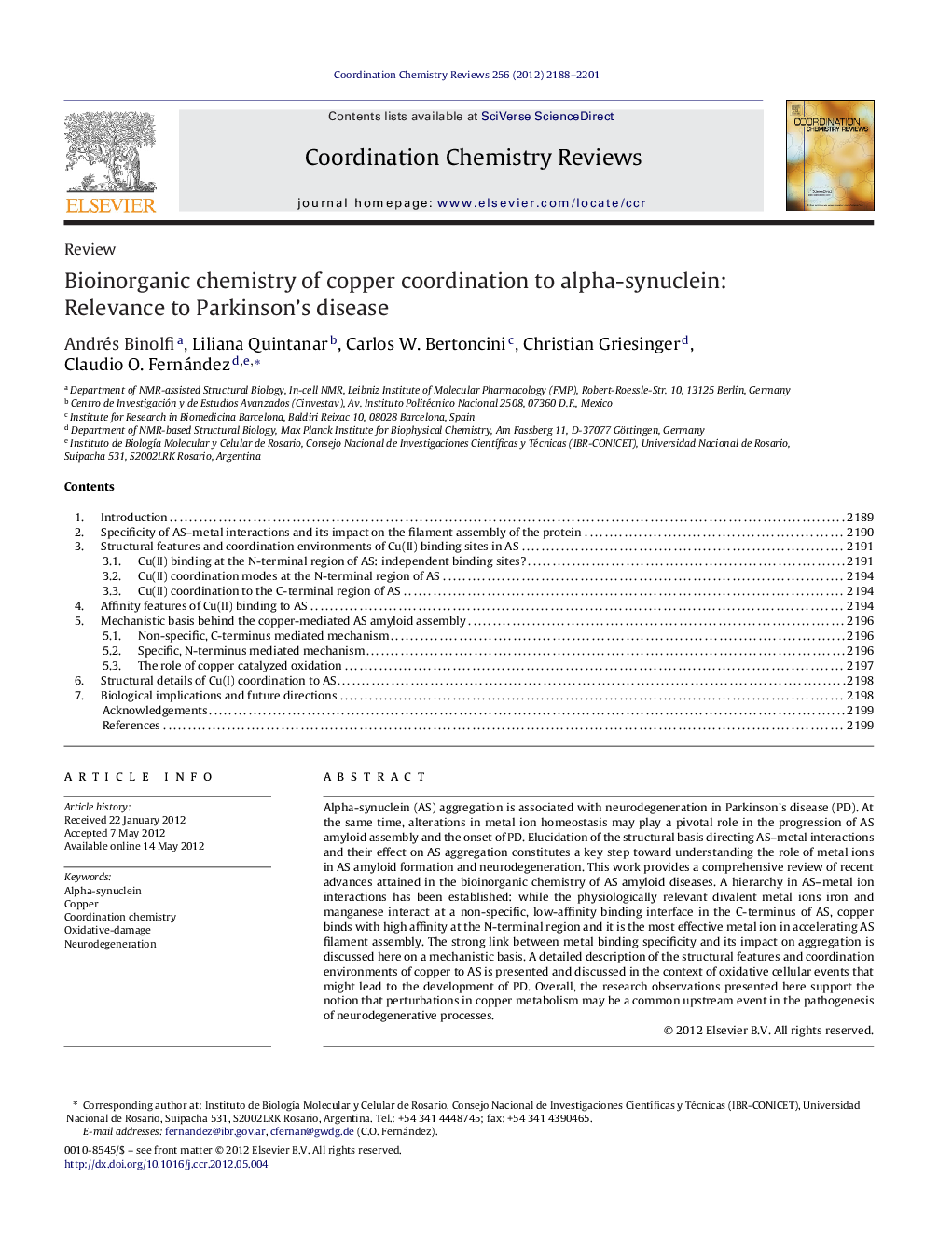| کد مقاله | کد نشریه | سال انتشار | مقاله انگلیسی | نسخه تمام متن |
|---|---|---|---|---|
| 1299693 | 1498767 | 2012 | 14 صفحه PDF | دانلود رایگان |

Alpha-synuclein (AS) aggregation is associated with neurodegeneration in Parkinson's disease (PD). At the same time, alterations in metal ion homeostasis may play a pivotal role in the progression of AS amyloid assembly and the onset of PD. Elucidation of the structural basis directing AS–metal interactions and their effect on AS aggregation constitutes a key step toward understanding the role of metal ions in AS amyloid formation and neurodegeneration. This work provides a comprehensive review of recent advances attained in the bioinorganic chemistry of AS amyloid diseases. A hierarchy in AS–metal ion interactions has been established: while the physiologically relevant divalent metal ions iron and manganese interact at a non-specific, low-affinity binding interface in the C-terminus of AS, copper binds with high affinity at the N-terminal region and it is the most effective metal ion in accelerating AS filament assembly. The strong link between metal binding specificity and its impact on aggregation is discussed here on a mechanistic basis. A detailed description of the structural features and coordination environments of copper to AS is presented and discussed in the context of oxidative cellular events that might lead to the development of PD. Overall, the research observations presented here support the notion that perturbations in copper metabolism may be a common upstream event in the pathogenesis of neurodegenerative processes.
Figure optionsDownload high-quality image (208 K)Download as PowerPoint slideHighlights
► Alpha-synuclein (AS) binds Cu(II) ions with high affinity at the N-terminal region.
► The highest affinity Cu(II) binding site involves the α-NH2 group of Met-1 residue.
► Cu(II) bound to AS can be redox-cycled resulting in oxidative protein damage.
► Cu(II) binding to AS at the N-terminus accelerates the amyloid aggregation of AS.
Journal: Coordination Chemistry Reviews - Volume 256, Issues 19–20, October 2012, Pages 2188–2201